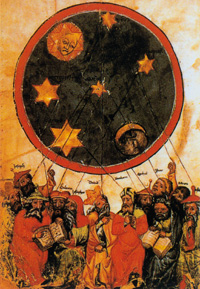
- Jewish Calendar. - The Jewish interest in mathematical astronomy derives from the fact that the Jewish calendar necessitates very special calculations; Since the Jewish year is based on the motion of the moon, the length of the calendar year varies, with an "intercalary" month added every few years.
1 Background
For many centuries, Jewish thinkers dealt with mathematics as an integral part of their work, often in connection with the calendar. In the Middle Ages, Jewish scholars were actively involved in translating mathematical and scientific manuscripts from Arabic into Hebrew and Latin.
However, Jewish mathematicians worked within their own communities, and they were often viewed with hostility or suspicion by Christians. German universities gradually started accepting Jewish students at the beginning of the 19th century. This process was far from being a linear “success story”. It was often characterized by setbacks and interrupted by anti-Semitic campaigns and pogroms. Evan when legal hurdles were removed in the course of the 19th century, new prohibitions or new hurdles were often established. Jewish students were confronted by the negative attitudes of Christian students, professors and officials and by the omnipresence of stereotypes and discrimination.
Between 1810 and 1848, only eighteen Jewish scientists were able to teach at university after receiving their academic teaching qualification. Seven of these later became professors, including four who converted in order to get the professorship. The first unbaptized Jew to become a German university professor was the mathematician Moritz Abraham Stern (1807–1894).